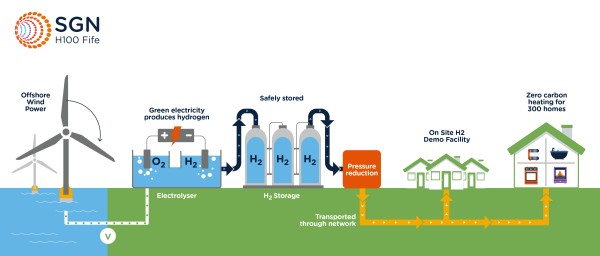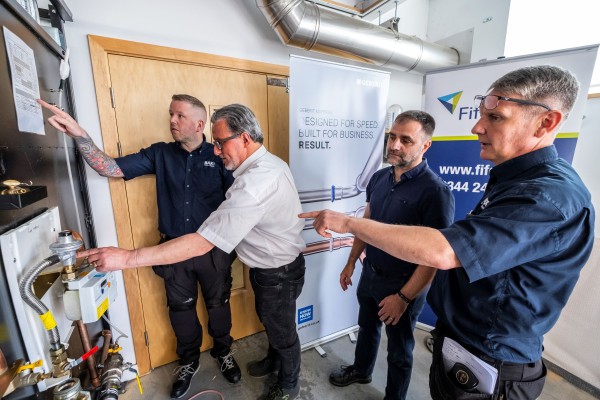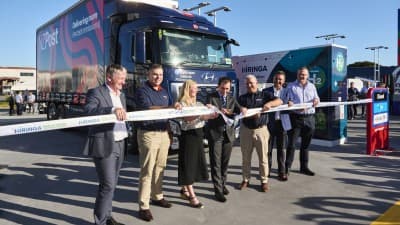An insight into a 100% Hydrogen-Powered Neighbourhood: H100 Fife, Scotland - by Ryan Phipps, Manager Operations - Firstgas
In Fife, Scotland, a pioneering initiative in home energy is taking place, and it’s something our Firstgas and Future Fuels teams, are watching closely.
The H100 Fife project, led by gas distributor SGN, is aiming to demonstrate the viability of green hydrogen for home heating and cooking.

H100 Fife diagram
What is H100 Fife?
This project in Buckhaven and Denbeath connects up to 300 homes to a brand-new 8.4 km hydrogen pipeline, built alongside existing gas infrastructure. The hydrogen is produced on-site through electrolysis powered by a nearby offshore wind turbine, providing a seamless green energy solution for residential use.
Participating households benefit from free hydrogen-compatible appliances, boilers and hobs, along with ongoing maintenance, ensuring a smooth transition and user experience, similar to using natural gas but without the carbon emissions. Safety is paramount with excess flow valves being installed in every home using hydrogen. These are designed to limit the flow of gas.
Project milestones so far:
- Construction of the 8.4 km hydrogen network is complete.
- The hydrogen production and storage facility at Fife Energy Park is well underway with foundations complete and four of six storage vessels in place.
- Electrolyser system installation is in progress
- The UK’s first hydrogen training facility is now open at Fife College to upskill gas engineers for the safe installation and maintenance of hydrogen appliances.
The project is scheduled to go live in autumn 2025. This demonstration is set to run until 2027, providing crucial evidence to inform future low-carbon policy decisions for Scotland and the wider UK.

H100 Fife training college to upskill gas engineers
Relevance for Clarus and New Zealand
For Clarus, and our Firstgas operations, it’s not just about hydrogen in theory; it’s about real-world readiness. H100 shows that embedding hydrogen into our networks involves more than blending, it requires:
- Upgraded infrastructure
- Hydrogen-ready appliances
- Comprehensive public outreach
- Transparent safety practices*
These are essential for earning the community trust needed for broader hydrogen adoption and acceptance.
Looking around the World
Energy companies globally are proving gas’s role in a low-carbon future—when it’s renewable, flexible, and responsibly delivered:
- Denmark: scaling up biomethane
- Germany: repurposing pipelines for hydrogen
- Japan: developing synthetic methane
- California: greening freight networks
- UK: piloting 100% hydrogen in homes
So, here’s the question for us in New Zealand: what will we build?
We’re a nation of inventors—Ernest Rutherford, John Britten, Bill Gallagher—and pioneers in innovation. Let’s take global inspiration and turn it into local action.
*The project has submitted a Safety Dossier to the Health and Safety Executive (HSE). The Safety Dossier is made up of three ‘cases for safety’ covering Production & Storage, Distribution and End Use.





